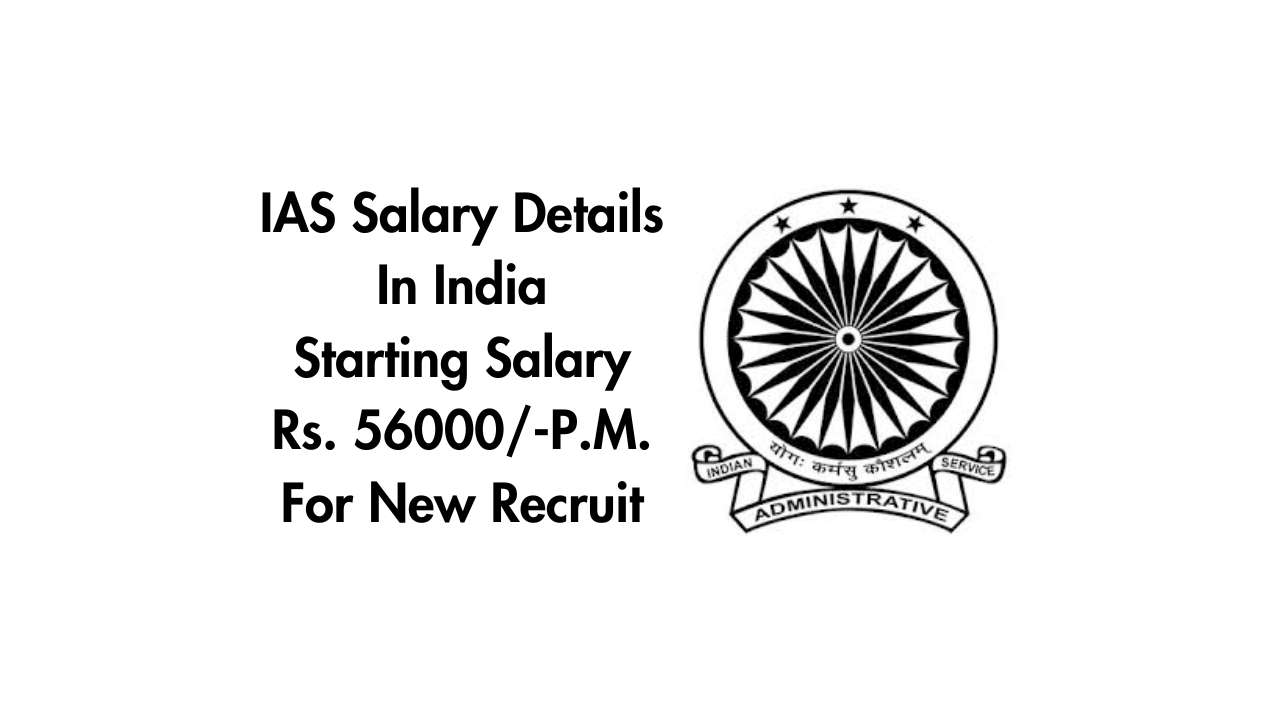The IAS salary is a big reason why people aim for this esteemed job to becom an Indian Administrative Service (IAS) officer is in India. It’s a top career choice, drawing in thousands of hopefuls every year. The IAS salary is a big reason why people aim for this esteemed job. It’s important to know about the pay scale, salary structure, and benefits for those interested in this career.
The IAS salary comes from the government’s Pay Commission, with the latest being the 7th Pay Commission. This commission changed the pay system to a consolidated level. New IAS officers start with a salary of Rs. 56,000 a month. At the top, like the Cabinet Secretary, the salary can go up to Rs. 2,50,000.
But, an IAS officer’s total monthly pay can be between Rs. 56,000 and Rs. 1,50,000. This includes various allowances and perks. These include Dearness Allowance, House Rent Allowance, and other benefits. These additions can greatly increase their total pay.
Introduction to IAS Officer Salary
The Indian Administrative Service (IAS) is a top job in India. Many dream of becoming an IAS officer for its prestige and good pay. The IAS officer pay scale is not the highest, but the Indian Administrative Service remuneration package is still very attractive.
Importance of IAS as a Coveted Profession
Every year, many candidates try to pass the UPSC Civil Services Exam. But only a few make it to the IAS. The job is sought after for its power, financial security, and benefits. IAS officers make policies that affect millions, so they are paid well to attract top talent.
Overview of Salaries and Perks
IAS officers get a great package that includes a basic salary, allowances, and benefits. Their basic pay is set by the Government of India and changes with the Pay Commissions. They also get Dearness Allowance (DA), House Rent Allowance (HRA), and Travel Allowance (TA), which boost their monthly income. The IAS salary and perks help them live comfortably while serving the country.
IAS Pay Scale: 7th Pay Commission
The 7th Pay Commission has made big changes to the civil services salary structure in India. It replaced the old ‘Pay Grades’ with ‘Consolidated Pay Levels’ for civil servants, including IAS officers. Now, the main thing that matters is the ‘Basic Pay’ for figuring out the IAS compensation packages.
Consolidated Pay Levels and Basic Pay
With the 7th Pay Commission, IAS pay and allowances start at Rs. 56,100 a month. The top salary is Rs. 2,50,000 for the Cabinet Secretary, the top civil servant. This new pay system is clearer and more straightforward, making it easier to understand ias income levels.
Salary Structure for Different Roles
- IAS officers in district administration get a basic pay from Rs. 56,100 to Rs. 1,77,500. This depends on their rank and years of service.
- Those in state secretariats earn between Rs. 67,700 and Rs. 2,08,700.
- IAS officers in the central secretariat in New Delhi get paid Rs. 78,800 to Rs. 2,09,200.
The ias pay commissions make sure the civil services salary structure stays competitive. It shows how important the Indian Administrative Service is in the country’s governance and growth.
IAS Salary: Entry-Level and Maximum Pay
The salaries of IAS (Indian Administrative Service) officers are very interesting. This job is highly sought after. An IAS officer starts with a salary of ₹56,000 per month at pay level 10. The top salary is ₹2,50,000 for the Cabinet Secretary at pay level 18.
But, an IAS officer’s total monthly pay can be between ₹56,000 to ₹1,50,000. This includes all the perks and allowances they get. The what is dm salary? and ias entry-level salaries are key for those thinking about this career.
For ias senior officer salaries, the top pay can go up to the highest level. The Cabinet Secretary gets the most. This shows the big responsibility and power of senior IAS officers in the government.
| Position | Salary Range (in ₹) |
|---|---|
| Entry-Level IAS Officer | 56,000 per month |
| Cabinet Secretary | 2,50,000 per month |
“The IAS salary structure is designed to attract the best talent and provide a comfortable standard of living for civil servants, who play a crucial role in the governance of the country.”
Breakdown of IAS Officer Salary Components
Being an IAS (Indian Administrative Service) officer means more than just a basic salary. There are extra parts that can greatly increase an IAS officer’s monthly pay. These extras make sure they get a full package of financial rewards.
Dearness Allowance and Its Impact
The Dearness Allowance (DA) is a big part of an IAS officer’s pay. The government increases it often to fight inflation. It can go up to 103% of the basic pay. This allowance is key to keeping IAS officers’ buying power steady as costs go up.
House Rent Allowance and Other Benefits
IAS officers also get a House Rent Allowance (HRA) that varies from 8% to 24% of their basic pay, based on their location. This helps cover the high cost of living in cities. They also get other perks like medical and transport allowances, house help benefits, mobile bill coverage, and travel expenses.
- Medical allowance to cover healthcare costs
- Transport allowance for commuting expenses
- House help benefits to assist with domestic tasks
- Mobile bill coverage for work-related communications
- Travel expenses for official trips and transfers
These ias salary components, along with ias dearness allowance and ias house rent allowance, help IAS officers stay financially stable. This makes being an IAS officer a sought-after career for many.
Comparison with Previous Pay Commission
The move from the 6th Pay Commission to the 7th has changed the IAS salary structure a lot. Before, the 6th commission used grade pay and time scales for IAS officers. Now, the 7th commission has a simpler system with consolidated pay levels and a new basic pay scale.
Grade Pay and Time Scales in 6th Pay Commission
Under the 6th Central Pay Commission, IAS officers had different grade pays from 5,400 to 12,000. The Apex Scale and Cabinet Secretary Grade had set salaries of 80,000 and 90,000, respectively. This system of grade pay and time scales helped officers move up in salary based on their years of service and how well they did their jobs.
The switch to the 7th Pay Commission brought a new way of paying IAS officers. The ias pay commission changes now focus on a simpler structure. The old ias grade pay and ias time scales are gone. Now, there’s a unified pay system that aims to make salaries clearer and fairer for IAS officers.
Factors Influencing IAS Remuneration
The Ministry of Personnel, Public Grievances and Pensions sets the salaries for India’s IAS officers. This ministry is key in setting the pay, allowances, and perks for these top civil servants.
Role of the Ministry of Personnel
The Ministry of Personnel sets and updates the pay for IAS officers. They look at several things when deciding on salaries:
- Cost of living and inflation rates
- Parity with other All India Services, such as the Indian Police Service (IPS) and Indian Forest Service (IFS)
- Competitiveness of salaries to attract talented individuals to the civil services
- Alignment with the recommendations of periodic Pay Commissions, such as the recent 7th Pay Commission
The ministry’s decisions on factors affecting IAS salary affect the officers’ pay and benefits. As the main body handling IAS officer salary issues, the Ministry of Personnel makes sure the IAS is a sought-after career.
| Key Responsibilities of the Ministry of Personnel | Impact on IAS Salary |
|---|---|
| Determining pay scales and allowances | Sets the basic pay, dearness allowance, house rent allowance, and other benefits |
| Implementing Pay Commission recommendations | Revises salary structure based on the latest Pay Commission report |
| Ensuring parity with other All India Services | Maintains competitiveness of IAS compensation compared to IPS, IFS, and others |
| Attracting top talent to the civil services | Offers competitive salaries to retain and motivate the best candidates |
IAS Salary vs Motivation for Civil Service
The promise of a high IAS officer salary draws many young people to the Indian Administrative Service (IAS). But, it’s important to see that civil service is more than just about money. The real drive for civil service comes from wanting to help the nation and improve people’s lives.
Though the IAS salary and benefits are tempting, those interested in civil service should not just chase the money. The real reason to join should be a deep love for public welfare, a passion for governance, and a readiness to face the country’s big challenges.
“The true power of the IAS lies not in the salary, but in the opportunity to transform the lives of millions of Indians.”
Young people should look forward to leading in policy-making, solving problems, and bringing about change for citizens. The civil service motivation should come from a sense of responsibility, a wish to make a difference, and a pledge to uphold justice, fairness, and openness.
The IAS salary and benefits are indeed tempting. But, they shouldn’t be the main reason for choosing this career. The real value of civil service is in serving the nation and bettering people’s lives. The salary is just a bonus.
Conclusion
The Indian Administrative Service (IAS) is a top career choice in India, drawing in thousands of hopefuls yearly. This article has shown why the summary of IAS salary and key takeaways on IAS compensation are key. They make many want to join this respected field.
The IAS salary starts competitive and grows with experience, offering great benefits and allowances at higher levels. Yet, the real value of being an IAS officer is serving the nation and improving people’s lives.
For those thinking about a career in the IAS, let the chance to serve be your main drive. The good pay is important, but it’s not the main reason. Knowing about the IAS salary, from the start to top levels, and the extra perks, helps you decide if this is the right path for you.
FAQ’s
1. What is the starting IAS salary in India? The starting salary for an IAS officer in India is approximately ₹56,100 per month. This is based on the 7th Pay Commission and can vary slightly depending on the posting and allowances.
2. How does the IAS salary structure progress with experience? IAS salary increases with experience and promotions. At the senior-most level, an IAS officer can earn up to ₹2,50,000 per month, along with various allowances and perks.
3. What allowances are included in the IAS salary? Apart from the basic salary, IAS officers receive several allowances including Dearness Allowance (DA), House Rent Allowance (HRA), Travel Allowance (TA), and more, which significantly enhance their total earnings.
4. Do IAS officers receive a pension after retirement? Yes, IAS officers are entitled to a pension after retirement. The pension amount is typically a percentage of their last drawn salary, ensuring financial stability post-retirement.
5. How does the location of posting affect an IAS officer’s salary? The location of posting can affect an IAS officer’s salary, especially the House Rent Allowance (HRA). Officers posted in metro cities receive a higher HRA compared to those in rural areas or smaller towns.

